| [Stop: music]
[Cue: speakers] Birder 1: "LOOK!Birder 2: "WHERE?!"Birder 1: "ON THE FENCE! |
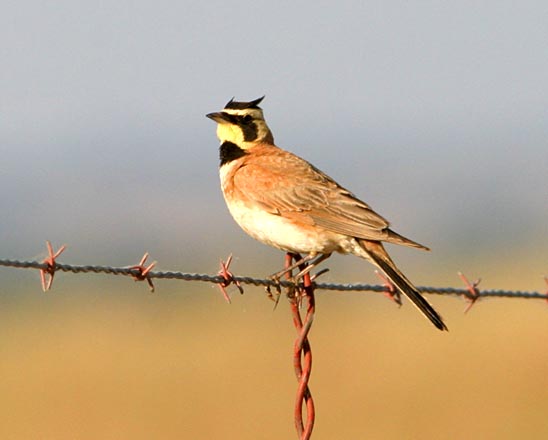 |
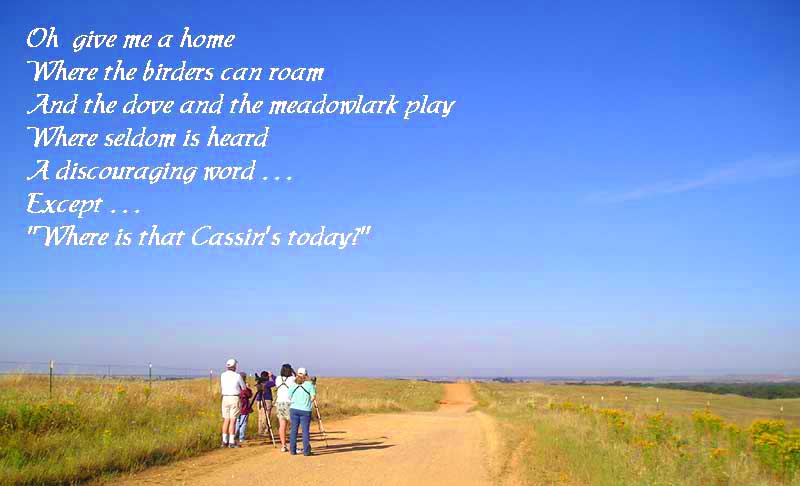
| [Stop: music]
[Cue: speakers] Birder 1: "LOOK!Birder 2: "WHERE?!"Birder 1: "ON THE FENCE! |
 |
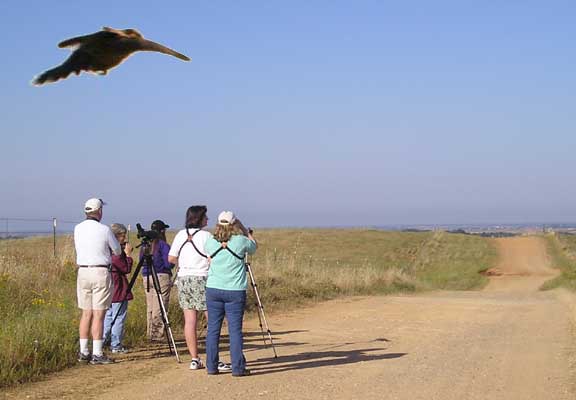 |
[heard from back of set]
Distant photographer: "It's skylarking right behind you! Look up! Look up! Hear it?"Birders [in unison]: "WHERE!!?"Distant photographer: "Right behind you." |
| Birder 3:
"Okay, okay.... hurry up. Get the scope on it! No — you're off the mark, its blurry, blocked, something! There! Focus, focus . . snap. Got ya." |
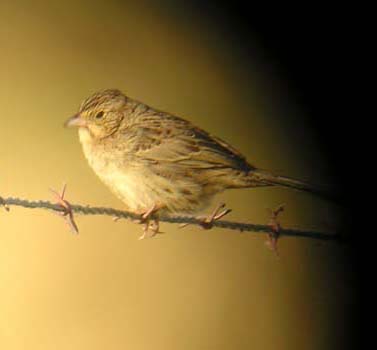 |
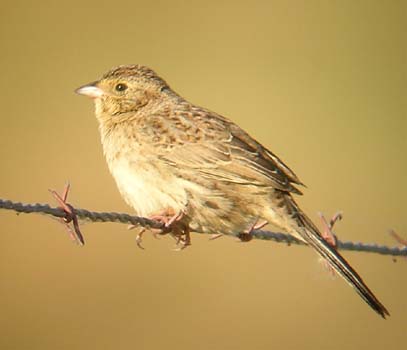 |
| Birder 3:
"Cool. That's the digi" ** "Now let's try the new camera. Same spot, same distance, steady . . shoot" ** [vocabulary: "digi" is a digiscoped image as
opposed to an image taken with a camera lens, either film or digital] |
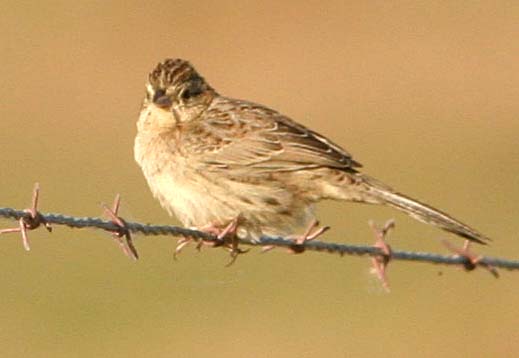 |
"So what do you think? A tad bit sharper? Slightly different exposure? Hard to say. Pretty distant from the bird in both shots, letting it have lots of space. Both of these images are cropped and blown up quite a bit from the full frame (see below)" |
| "See what I mean. This is the full frame shot. Exact same photo as the one just above" |
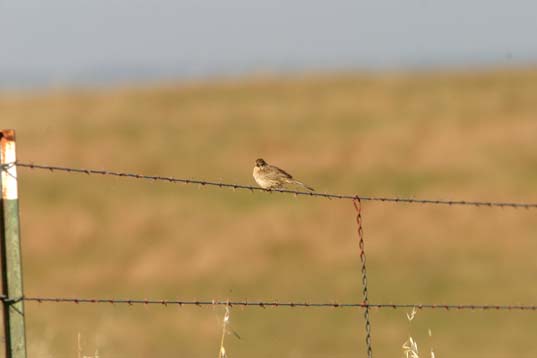 |
| "Now it's singing again. Lovely song, don't ya think?" |
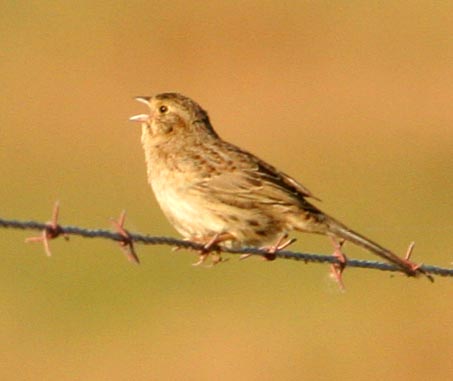 |
THE CREAGRUS CALIFORNIA
LIST
A personal
portfolio: the Sacramento Cassin's Sparrow 30 May 2005
|
This is, of course, the Cassin's Sparrow on Latrobe Road in eastern Sacramento County (within 1.5 miles of the El Dorado County line), found by Ed Pandolfino some 9 days ago. Rita Carratello and I arrived about 7:15 a.m., just as Brian Fitch & friend were leaving having experience the bird's performance. In the next 40 minutes the sparrow gave 5 minute performances twice — with 4-5 skylarking bouts in each performance and many more songs from the fence during a performance — each performance separated by about 10-15 minutes. During a performance it tended to sing often, with pauses between 11-16 seconds, but most songs were from the fence. When a performance ended it went down into the dry grass and disappeared. After ending a bout at 7:55 a.m., it did not start the next round until 8:26 a.m. — a half hour later — and we heard later from others that it let another half-hour go by before performing at about 9:00 a.m. Clearly, its tempo slows down as the morning wears on and it gets hotter, and the time between singing bouts increases significantly. That is an actual shot of the bird skylarking that I have PhotoShopped® over the birders' heads up higher on this page. Alas, it is backlit. The bird does have tiny white corners to the tips of the outer rectrices when viewed at the right angle in a good scope. |
See the family page for county abbreviations. All photos © 2005
Don Roberson,; all rights reserved.
Readers may use this material for their own private enjoyment,
study, or research but none of the photos or text herein may be used commercially
nor may they be reposted on other web sites without written permission.
All material is copyrighted.